To write a compelling short film, start with a strong concept that grabs attention right away. Keep your story simple; focus on one clear emotion or idea to avoid confusion. Develop authentic characters with relatable struggles and create conflict that keeps viewers engaged. Remember to show, not tell—use visuals to evoke feelings instead of relying solely on dialogue. Craft a gripping opening and a memorable ending that resonates. Don’t forget to edit ruthlessly—cut anything that doesn’t serve your story, and always seek feedback from others. Trust me, there’s plenty more to explore in the art of filmmaking!
Key Highlights
- Start with a strong, simple concept that captures attention and evokes relatable emotions to engage viewers from the outset.
- Develop authentic characters with clear motivations and flaws to create emotional connections and drive the narrative’s conflict.
- Emphasize visual storytelling by using imagery, symbols, and shot composition to convey emotions without relying solely on dialogue.
- Craft a gripping opening to hook the audience and a memorable ending that evokes strong emotions and leaves a lasting impression.
- Edit ruthlessly by cutting unnecessary scenes and tightening dialogue to enhance the narrative’s impact and maintain viewer engagement.
Start With a Strong Concept

A great short film often begins with a strong concept that captures attention right away. Think about what excites you or sparks your imagination. It could be a simple idea, like a lost puppy searching for a home, or something quirky, like a talking plant. You’re not just telling a story; you’re inviting your audience into a world that feels genuine and safe. Utilizing essential filmmaking equipment like a vidpro dolly can enhance the visual storytelling of your concept, making the filming process smoother.
When I first started making films, I’d often overlook this step, thinking I could build an exciting story on the fly. Spoiler alert: it didn’t work! Focusing on a solid concept first helped me create films that not only entertained but also resonated with viewers.
Try to brainstorm ideas that feel meaningful to you. Don’t shy away from exploring emotions—joy, friendship, or even fear—but make sure the concept remains relatable and safe for your audience. Share your ideas with friends and see what resonates. Remember, the best films often start with a question or a dilemma that’s easy to grasp. So, plunge into it and let your imagination lead the way. You might just uncover a story that’s waiting to be told!
Focus on Character Development
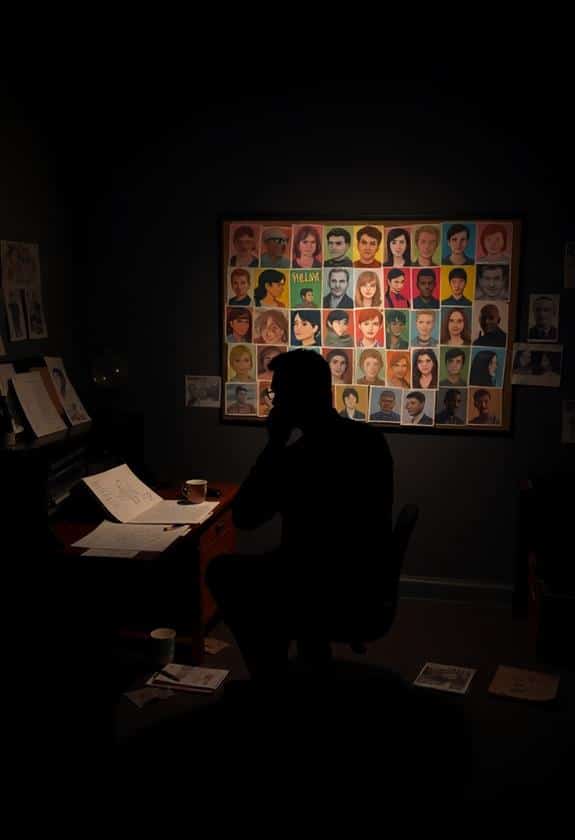
Characters are the heart of your short film, bringing the concept to life and making it relatable. When you focus on character development, you create connections with your audience. Think about it—how many times have you watched a film and felt a deep bond with a character? That’s what you want for your short film! To enhance the authenticity of your characters, consider how sound can amplify their emotions and dialogue. Using high-quality audio equipment, such as top microphones for filmmaking, can help capture the nuances of your characters’ voices, making their experiences more immersive.
Start by giving your characters clear motivations and backgrounds. Show us why they act the way they do; it makes their journey more impactful. For instance, in one of my early films, I had a timid character who faced a big challenge. By revealing her backstory, viewers understood her fears and cheered her on.
Don’t forget to add layers to your characters. They should have flaws and strengths, just like real people. Maybe your hero is brave but struggles with self-doubt—this makes them relatable!
Create a Compelling Conflict
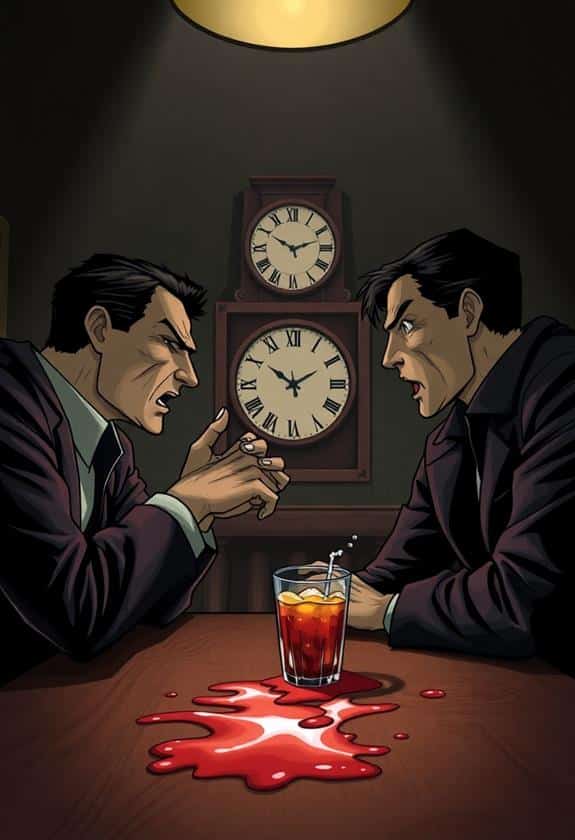
Conflict often drives the narrative forward, making it essential for your short film’s success. Think of conflict as the engine that keeps your story chugging along. It creates tension and keeps your audience engaged. Here are three ways to create a compelling conflict:
- Internal Struggles: Show how your character battles their own fears or doubts. Maybe they’re scared to pursue their dream, like I was when I first picked up a camera. That uncertainty can resonate deeply with viewers, especially when considering the best cameras for filmmaking that can empower them to tell their story.
- External Obstacles: Introduce challenges that your character must face. Perhaps they’re trying to connect with a friend while dealing with family issues. These relatable situations can make your audience root for your character.
- Relationships: Conflict can arise from relationships—be it friends, family, or foes. A misunderstanding or betrayal can heighten the stakes and keep the story dynamic. I once saw two friends drift apart over a misunderstanding, and it made for a powerful short film idea!
Keep It Simple

While it’s tempting to weave intricate plots and subplots, keeping your short film simple often leads to a stronger impact. Trust me, I’ve learned this lesson the hard way! When I first started making shorts, I wanted to impress everyone with twists and turns. Instead, I confused my audience—and myself. Simplifying your story allows viewers to connect with your characters and themes without getting lost in unnecessary details. Plus, utilizing affordable filmmaking gear like a basic camera and tripod can help you focus more on storytelling rather than technical challenges, making it easier to keep your narrative straightforward affordable filmmaking gear.
Focus on one main idea or emotion. For instance, if you’re telling a story about friendship, stick to that. Maybe show a moment of conflict between friends, then resolve it. This clear focus helps your audience feel safe and engaged. It’s like a cozy blanket; they know what to expect and can enjoy the warmth of your story.
Also, don’t overload your film with too many characters. A couple of well-developed characters can create a powerful dynamic. Remember, it’s not about how much you say, but how deeply you say it. Keep your message clear, and you’ll leave a lasting impression. So, start simple, and let your creativity shine! You’ll find that sometimes, less really is more.
Show, Don’t Tell
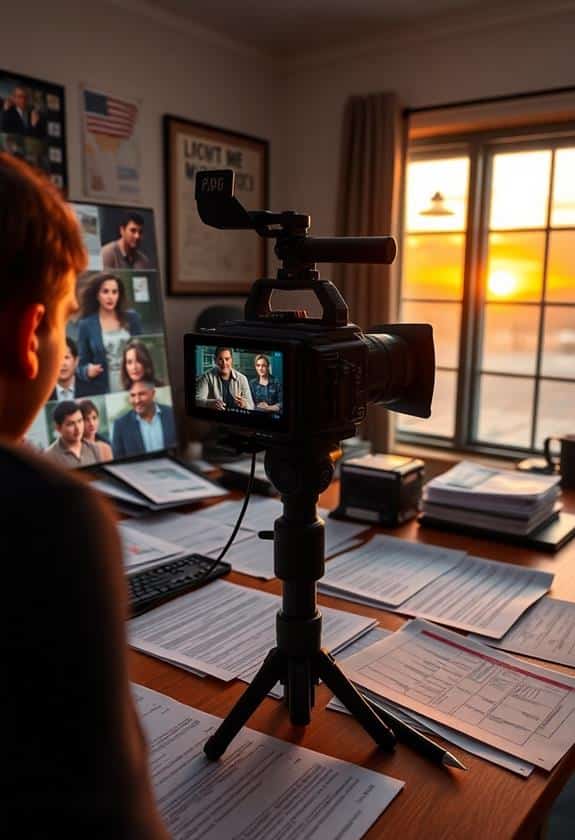
One of the most powerful techniques in filmmaking is the principle of “show, don’t tell.” Instead of relying on dialogue to convey emotions or plot points, you can communicate these elements visually. It’s like telling a story through pictures—much more engaging! Utilizing effective lighting can enhance the visual storytelling, with tools like the Glide Gear BFS 100 Butterfly Scrim Diffuser to soften harsh lighting and create the right mood.
Here are three ways to effectively “show” in your short film:
- Facial Expressions: A character’s smile or frown can express joy or sadness without saying a word. Think of how a small child’s eyes light up when they see their favorite toy!
- Body Language: A character crossing their arms might suggest they’re feeling defensive or upset. It’s a simple gesture that speaks volumes about their feelings.
- Setting: Use your surroundings to reflect emotions. A stormy sky can symbolize turmoil, while a sunlit park can evoke happiness and peace.
Write a Gripping Opening
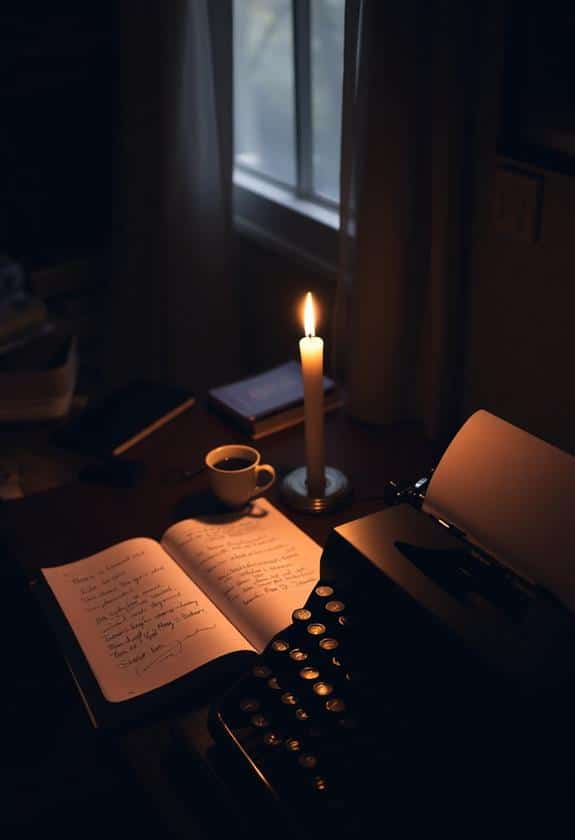
Capturing your audience’s attention from the very start is essential in short films. You’ve only got a few moments to hook them, so make it count! Think about your opening scene as a warm welcome; it should invite viewers in and make them curious. A strong opening can be as simple as a striking image or an enthralling line of dialogue that hints at the adventure to come.
When I started writing, I often struggled with beginnings. I realized that starting with a question can be effective—something like, “What would you do if you lost everything?” It pulls your audience in and gets them thinking. You could also introduce an intriguing character or a surprising situation right away; this sets the stage for what’s to unfold.
Don’t forget to keep it relatable. Your audience wants to feel safe and connected, so grounding your opening in emotion can really help. Remember, you want them to invest in your story! So, take a moment to craft that first scene carefully, and watch how it transforms your film. With a gripping opening, you’ll have your viewers enthusiastic to see what happens next!
Utilize Visual Storytelling
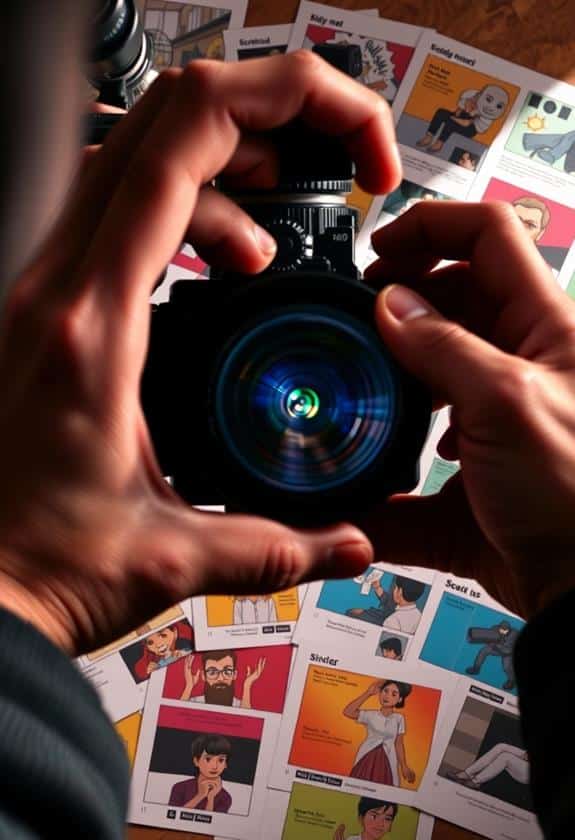
Visual storytelling is essential in short films; it can convey emotions and themes without a single word. You don’t need fancy dialogue to move your audience. In fact, powerful visuals can tell a story all on their own. Here’s how you can make the most of it:
- Show, Don’t Tell: Instead of explaining a character’s feelings, show them in action. A character gazing longingly out a window tells you a lot more than a voiceover could.
- Use Symbols: Objects can carry weight. A wilting flower might represent lost love or fading hope. Think about what you have around that can add depth to your story.
- Frame Emotion: Pay attention to your shot composition. A close-up of a character’s face can capture their inner turmoil, while wide shots can evoke isolation.
When I first started, I faced challenges with this approach, but practicing these techniques made a huge difference. So grab your camera and get creative! Visual storytelling not only enriches your film but also keeps your audience engaged and invested in your story.
Craft a Memorable Ending
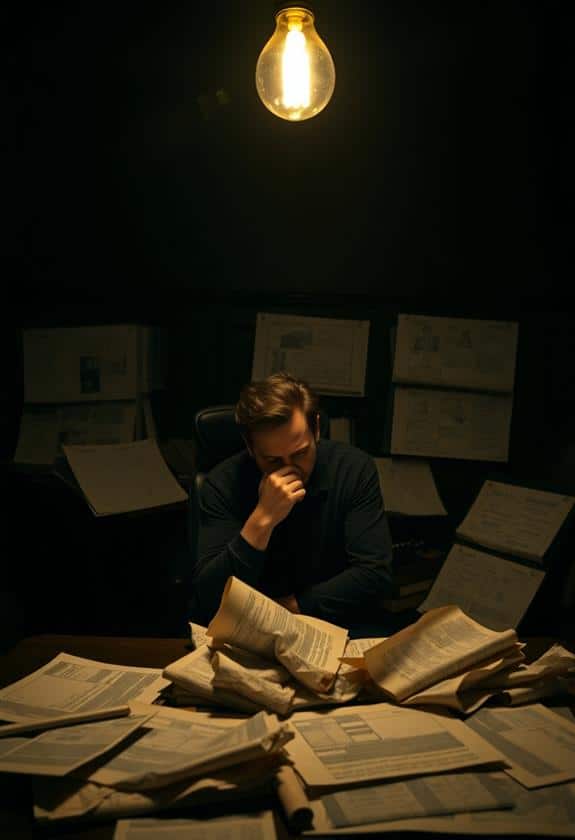
A strong ending can elevate your short film from good to unforgettable. Think about it: you want your audience to leave feeling something—curiosity, joy, or even a touch of sadness. When I was working on my first short film, I struggled with the ending. I tried to tie everything up neatly, but it just felt flat. Then, I realized that sometimes, leaving a question unanswered can be more powerful than a tidy conclusion.
Consider your characters’ journeys. What lesson do they learn? How do they change? If you can capture that pivotal moment, you’ll create an emotional punch. For instance, if your protagonist has faced fears, let them take a brave step in the final scene. It’s like giving your audience a gift—something they can ponder even after the credits roll.
Also, don’t shy away from a bit of humor or whimsy, if it fits your story. A light-hearted twist can linger in viewers’ minds. Remember, the ending is your last chance to connect. So, make it count, and let your audience walk away with a piece of your story in their hearts!
Edit Ruthlessly
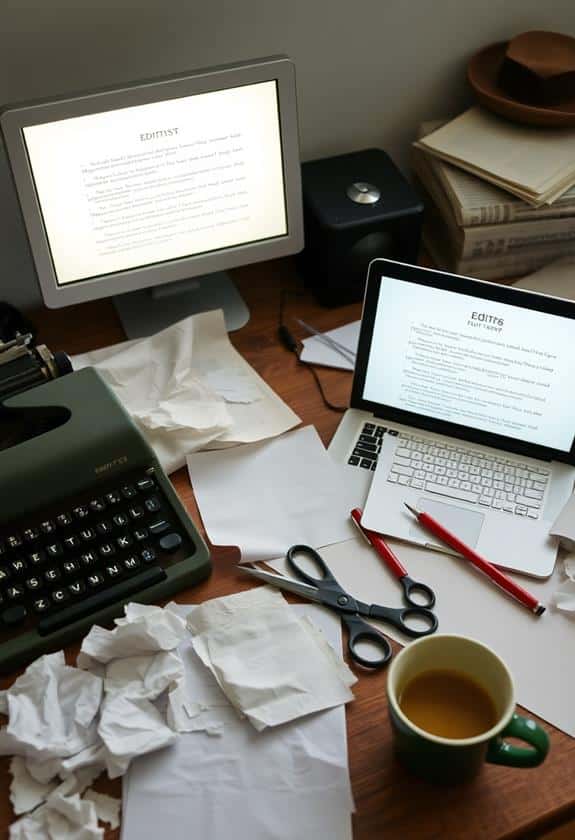
Editing is one of the most essential steps in your short film process, and you shouldn’t underestimate its power. Think of it as your chance to polish your gem. When you edit, you’re not just cutting out scenes; you’re crafting a more powerful story. Here are three tips to keep in mind:
- Cut the Fluff: If a scene doesn’t serve your story, let it go. I once held onto a funny scene because I loved it, but it didn’t fit. I eventually realized that every moment should push the narrative forward.
- Tighten Dialogue: Make sure your characters are saying what they need to say, nothing more. Trim the excess words. For example, instead of “I really think you should consider going,” try “You should go.”
- Check Pacing: Your film should flow smoothly. If a scene feels too long, it probably is. I learned the hard way that pacing can make or break a viewer’s interest.
Seek Feedback and Revise

Once you’ve polished your film through editing, it’s time to gather outside perspectives. This step can feel a bit scary, but trust me, it’s essential! Sharing your work with others allows you to see it through fresh eyes. Invite friends, family, or even fellow filmmakers to watch your film. Ask for honest feedback; they might catch things you didn’t notice, like pacing issues or unclear plot points.
When you receive feedback, stay open-minded. I remember the first time I shared my film; I cringed at some comments. But guess what? Those critiques helped me improve my story. Now, I enthusiastically await feedback because it sharpens my work.
After gathering opinions, sit down and revise your film. Don’t be afraid to make changes—even big ones! It’s all part of the process. You might find that a simple tweak makes a huge difference.
And remember, every filmmaker faces challenges. Embrace the journey, and keep refining your craft. Your short film can only get better with each round of feedback and revision. So, gather your courage, share your work, and let the magic of collaboration unfold!
Frequently Asked Questions
How Long Should a Short Film Typically Be?
A short film should typically be between 5 to 15 minutes long. It’s that sweet spot where you can tell a story without dragging things out. I remember my first short was 20 minutes, and I learned the hard way that keeping it concise is key! Aim for a clear beginning, middle, and end. If you’re passionate about your idea, you’ll find a way to make it work in that timeframe!
What Genres Work Best for Short Films?
When you think about genres for short films, consider what excites you! Comedy often works well because it grabs attention quickly, but drama can really pull at the heartstrings. I once made a horror short that left my friends jumping! Don’t shy away from experimenting with sci-fi or fantasy either; they can spark imagination. Ultimately, choose a genre that resonates with you and showcases your unique voice. Your passion will shine through!
How Do I Find Inspiration for My Short Film?
Finding inspiration for your short film can feel challenging, but it’s often hiding in plain sight. Start by exploring everyday moments; a simple conversation or a walk in the park can spark ideas. Keep a notebook handy to jot down thoughts. When I struggled with this, I found a quirky character in my favorite café that led to a fun story. Remember, inspiration’s everywhere—you just have to look!
Should I Use Professional Actors or Friends?
When deciding between professional actors or friends, think about your film’s needs. Friends might bring a fun, relaxed vibe, but they may lack experience. On the other hand, professional actors can elevate your story with their skills, though they might feel less personal. I once cast a friend, and while it was a blast, their nerves showed! It’s all about balancing your vision with what feels right for you and your project.
How Can I Effectively Market My Short Film?
To effectively market your short film, start by sharing it on social media platforms, where friends and family can help spread the word. Create an enchanting trailer that highlights the best parts. Consider entering film festivals for wider exposure—it’s like a showcase for your passion! Don’t underestimate the power of word-of-mouth; ask viewers to share their thoughts. Remember, every connection counts, and a little humor can go a long way in engaging your audience!
Conclusion
So, when you’re crafting your short film, think of it like planting a seed. Nurture your ideas, let your characters bloom, and watch the story unfold. Remember, every great film starts with a single spark of creativity. Don’t be afraid to dig deep and let your passion shine through, even if it feels tough sometimes—like trying to grow flowers in the shade! With these tips, you’ll be well on your way to creating something truly special. Happy filming!




